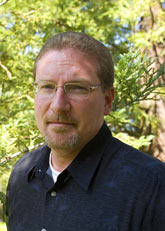
Handy Links
SLAC News Center
SLAC Today
- Subscribe
- Archives: Feb 2006-May 20, 2011
- Archives: May 23, 2011 and later
- Submit Feedback or Story Ideas
- About SLAC Today
SLAC News
Lab News
- Interactions
- Lightsources.org
- ILC NewsLine
- Int'l Science Grid This Week
- Fermilab Today
- Berkeley Lab News
- @brookhaven TODAY
- DOE Pulse
- CERN Courier
- DESY inForm
- US / LHC
SLAC Links
- Emergency
- Safety
- Policy Repository
- Site Entry Form

- Site Maps
- M & O Review
- Computing Status & Calendar
- SLAC Colloquium
- SLACspeak
- SLACspace
- SLAC Logo
- Café Menu
- Flea Market
- Web E-mail
- Marguerite Shuttle
- Discount Commuter Passes
-
Award Reporting Form
- SPIRES
- SciDoc
- Activity Groups
- Library
Stanford
Around the Bay
Accelerator Directorate Update

Back in August and early September, SLAC rolled out the new Accelerator Directorate and celebrated the creation of our signature in accelerator science and technology capabilities. We established four core teams focused on achieving our program requirements for safe beam delivery and utilization; and we established three technical divisions focused on our laboratory objectives for capability stewardship and deployment. Based on beam delivery performance to date with the Linac Coherent Light Source, Stanford Synchrotron Radiation Lightsource, the test facilities; comments from our users and programs regarding the quality of the staff we provide; and our full plate of compelling work in accelerator research and accelerator engineering, I'm very pleased with where we are. So, the obvious question is where are we going, and what do we need to prepare for?
Three strategic questions are on the front burner for the Accelerator Directorate. First, what are the inputs we need and how are we refining our strategy in accelerator research? Second, how does that strategy affect the investments we make in AD infrastructure? Third, what do we need to be doing to get ready for our programmatic next steps with the LCLS , SSRL, Particle Physics and Astrophysics, and Photon Science organizations?
Refining our strategy in accelerator research requires input from various workshops regarding where the community feels accelerator based science is headed. We need input regarding where our linear collider research as a program is pointed, and we need input from each of you regarding interests. We can then compare that set of vectors with our strengths and opportunities for distinction. As an example, we remain committed to a signature in electron based accelerators; but, within that signature is a broad field of engineering and science dealing with radio frequency systems and their associated power supplies regardless of their nature as warm or superconducting systems. We will capitalize on that strength as our signature evolves.
How does the strategy for accelerator research affect our investments? As you know, we have initiated a search for the department head of our Klystron group. As we press forward in strategy, the attributes and linkages between the Klystron and Power Conversion groups become more obvious, the needs for infrastructure investments clarify, and the expectations for management and performance become more refined. This is just a single example of where strategy and investment overlap. There are many others. The end result of addressing both our strategy and investment questions will be a plan by the end of the year that helps us build a road map for the next five years and gives us a foundation for addressing change in a disciplined manner.
Getting ready for next steps in programmatic direction is also helping us come to grips with change. LCLS is beginning the process of establishing mission need for its first major upgrade, LCLS II. This is an exciting new project extending the capabilities of LCLS in operating range and capacity. SSRL has just begun to take full advantage and demonstrate its new top-off and power capabilities. PPA is on the verge of bring FACET to life and the test facilities have a long string of upgrades and experiments we are committed to deliver.
All in all, our first three months as a directorate have been filled with exceptional performance, great safety statistics, compelling ideas in Laboratory Directed Research and Development, and an almost limitless list of possibilities we need to refine as we head into the new Yyar. Please keep your comments and constructive criticism coming. AD is a large organization and the more management hears from you, the better able we are to address your needs.
